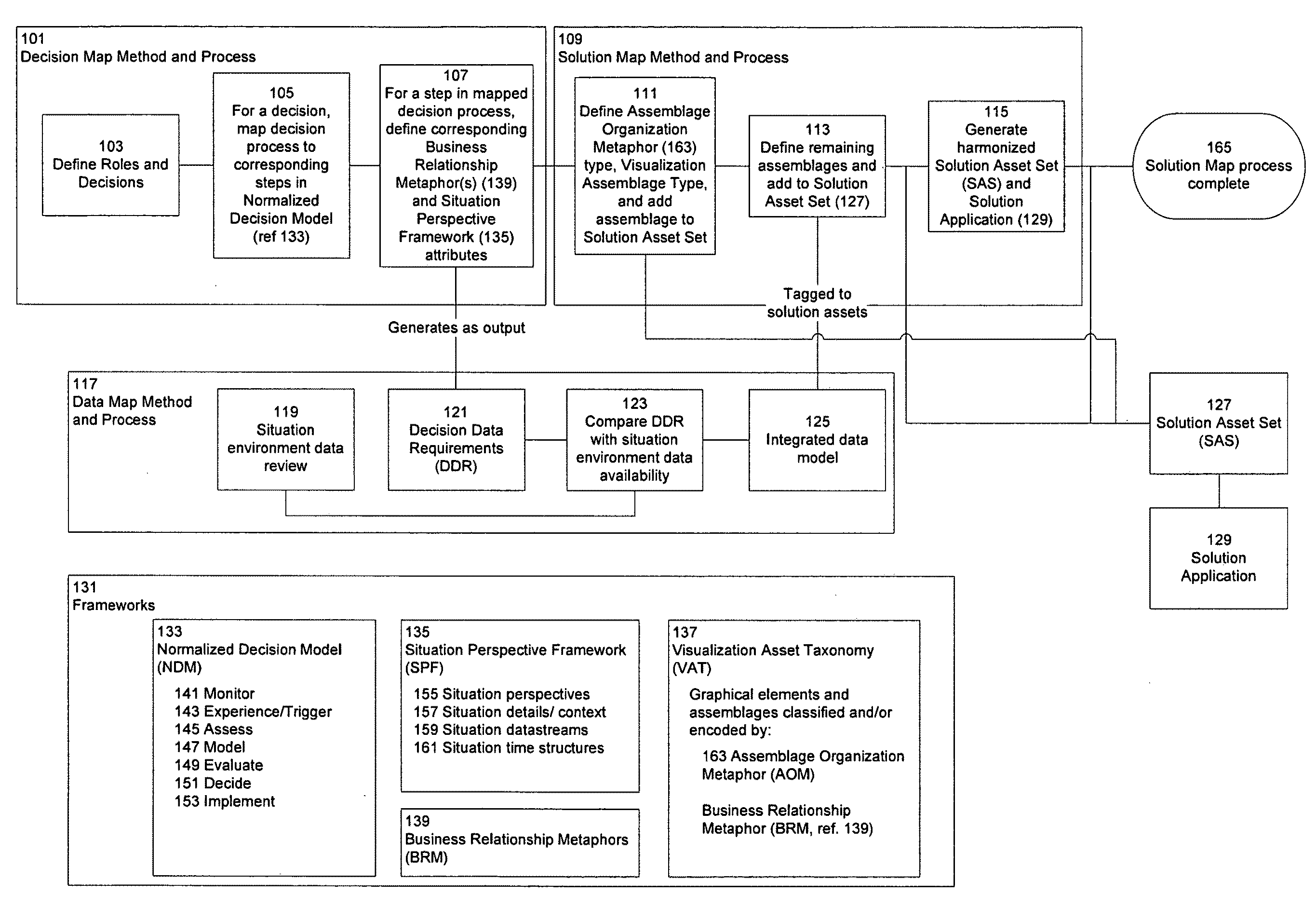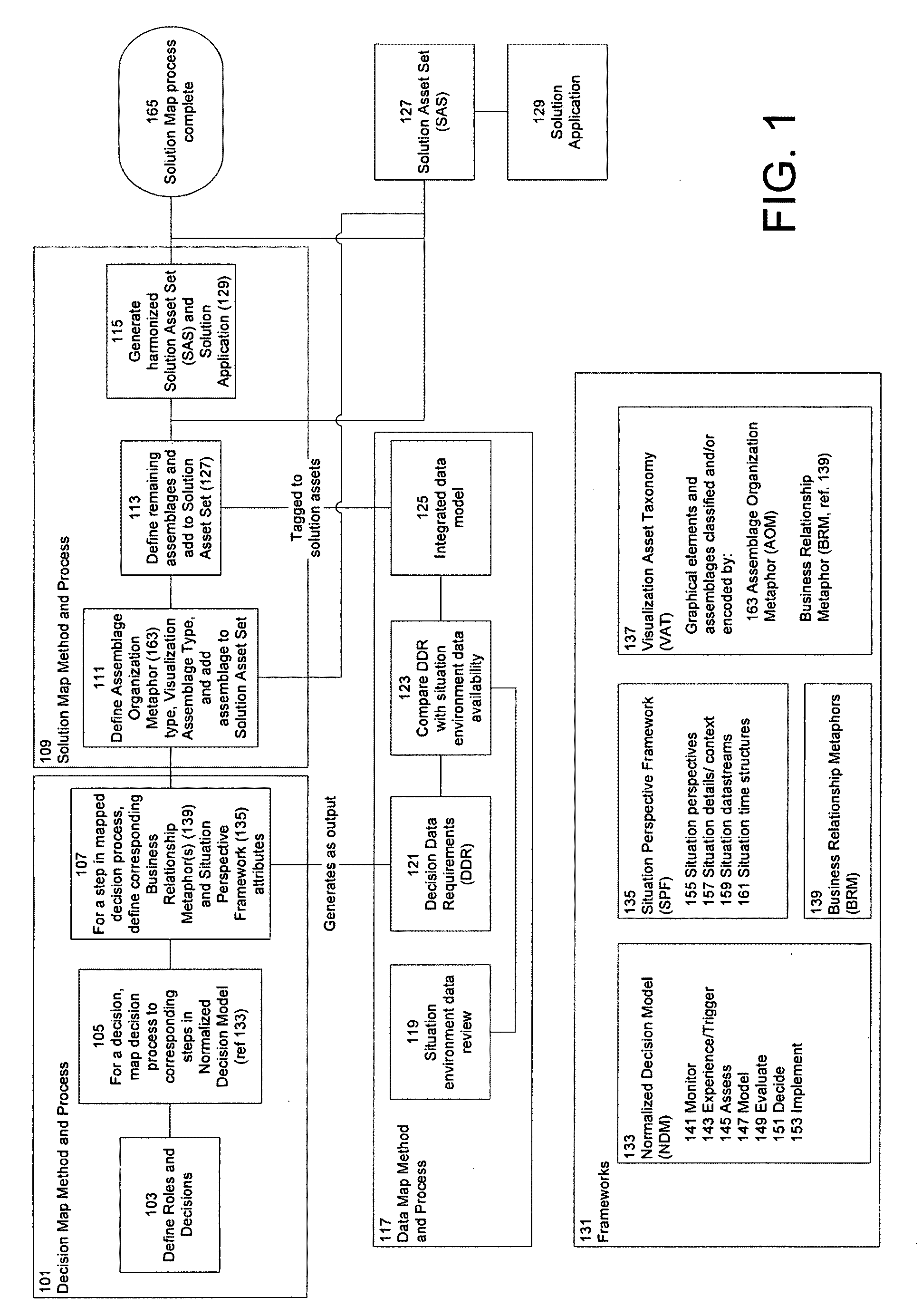System and method for systematically arranging a set of display elements in assemblages to meaningfully represent data
a technology of display elements and assemblages, applied in the field of computer graphics displays, can solve the problems of insufficient development of methods for selecting an appropriate data visualization, inability to give people enough context and perspective, and inability to give people enough data visualization, etc., and achieve the effect of less disorientation
- Summary
- Abstract
- Description
- Claims
- Application Information
AI Technical Summary
Benefits of technology
Problems solved by technology
Method used
Image
Examples
Embodiment Construction
[0099]Referring now to the drawings, wherein like reference numerals designate identical or corresponding parts throughout the several views, and more particularly to FIG. 1 thereof, there is illustrated an exemplary overview of the processes, methods and frameworks comprising the invention according to an exemplary embodiment. In FIG. 1, four frameworks are provided within element 131:
[0100]Visualization Asset Taxonomy, or VAT, (element 137) comprising groups of graphical elements arranged in different layouts and formats, each such assemblage classified along at least two dimensions: (1) layout type (“Assemblage Organization Metaphor,” or AOM, ref 163), and (2) relationship metaphor (“Business Relationship Metaphor,” or BRM, ref 139). Each assemblage may be further specified by attributes of the situation being studied. Those attributes are described in the Situation Perspective Framework (SPF, see below). Assemblages may be encoded with method(s) that describe the behavior (e.g.,...
PUM
 Login to View More
Login to View More Abstract
Description
Claims
Application Information
 Login to View More
Login to View More - R&D
- Intellectual Property
- Life Sciences
- Materials
- Tech Scout
- Unparalleled Data Quality
- Higher Quality Content
- 60% Fewer Hallucinations
Browse by: Latest US Patents, China's latest patents, Technical Efficacy Thesaurus, Application Domain, Technology Topic, Popular Technical Reports.
© 2025 PatSnap. All rights reserved.Legal|Privacy policy|Modern Slavery Act Transparency Statement|Sitemap|About US| Contact US: help@patsnap.com



